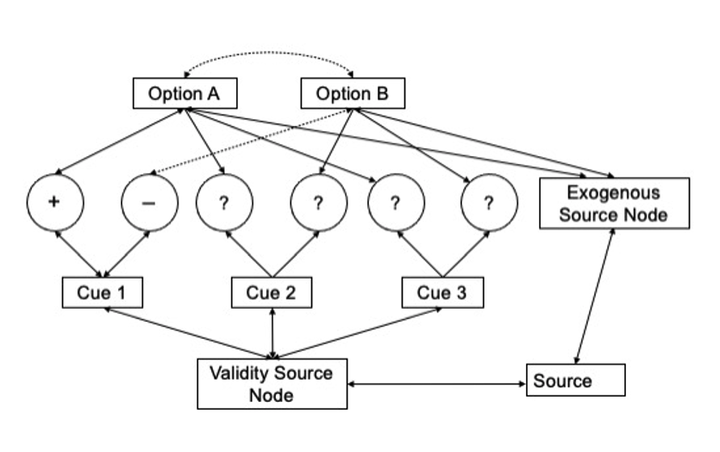Salience effects in information acquisition: No evidence for a top-down coherence influence

Abstract
The Integrated Coherence-Based Decision and Search (iCodes) model proposed by Jekel et al. (2018) formalizes both decision making and pre-decisional information search as coherence-maximization processes in an interactive network. Next to bottom-up attribute influences, the coherence of option information exerts a top-down influence on the search processes in this model, predicting the tendency to continue information search with the currently most attractive option. This hallmark “attraction search effect” (ASE) has been demonstrated in several studies. In three experiments with 250 participants altogether, a more subtle prediction of an extended version of iCodes including exogenous influence factors was tested: The salience of information is assumed to have both a direct (bottom-up) and an indirect (top-down) effect on search, the latter driven by the match between information valence and option attractiveness. The results of the experiments largely agree in (1) showing a strong ASE, (2) demonstrating a bottom-up salience effect on search, but (3) suggesting the absence of the hypothesized indirect top-down salience effect. Hence, only two of three model predictions were confirmed. Implications for various implementations of exogenous factors in the iCodes model are discussed.